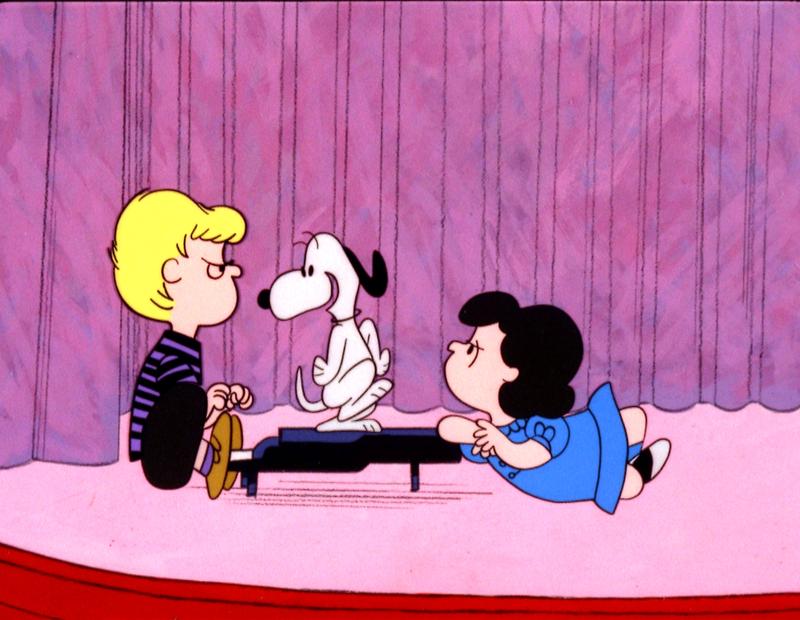
Since the introduction of sound synced to pictures, jazz and animation went hand in hand. Both the musical genre - born from the earlier ragtime and blues styles - and the short films pioneered by early producers like Max Fleischer, Charles Mintz and Walt Disney - were constantly undergoing new innovations. The marriage of the two styles blended well - not only showcasing the malleability of each art form but also bringing a contemporary sense to individual works.
Before the advent of synced sound, Silent films were often accompanied by classical music pieces and played on specially designed organs that could also produce sound effects. However, most filmgoers didn't live in cities. They visited smaller-scale, local theaters that used improvised piano music - much in the improvisational spirit of early jazz. When feature films became more prevalent, the musicians either created or were provided cue sheets with short musical cues to play at specific moments in the film. Still, the improvised jazz sound lived on when sound films began - notably, with the first synced sound cartoon. In 1928, Disney released "Steamboat Willie", a Mickey Mouse cartoon, which featured a Ragtime-style jazz score.
The use of jazz in animation ranges from simple color shorts to Disney feature films like The Jungle Book and Lady and the Tramp to the swinging orchestral TV themes of The Flintstones. Around the holiday season, though, no animated feature's jazz score comes to mind more than that of A Charlie Brown Christmas, the cartoon adapted from Charles Schultz's Peanuts comic strip.
A Charlie Brown Christmas is notable for many reasons: first, it was one of the first of the traditional ‘Christmas specials’ ever produced – its success led to the creation of the Rankin-Bass favorites like Rudolph the Red Nosed Reindeer. Secondly, there were no acting professionals in the cast – director Bill Melendez used amateur children for the voice acting, often having to read the lines to them verbatim because they were so young they had difficulty reading. But the third, most important thing is the soundtrack by jazz composer Vince Guaraldi.
It’s said that Melendez first heard Guaraldi’s composition ‘Cast Your Fate to the Wind’ while driving along the Golden Gate Bridge and decided that his music’s sensibility would be perfect for the droll but heartwarming world the Peanuts characters lived in. CBS executives were said to be confused and angry when they learned of the planned usage of Guaraldi’s music – Christmas and jazz, they thought, didn’t go together at all. In fact, in the days before airing, it was thought that the program would be a flop for all three of these reasons. Charles Schultz had even thought poorly of it. A drunken animator at a party, though, claimed that the special would run "a hundred years". This year was the 50th anniversary of the airing – we’re halfway there.
The real charm of A Charlie Brown Christmas, according to many critics is its soundtrack, which helped bridge the animation with the often stilted delivery of the children and the lack of many traditional sound effects. Composed by Guaraldi for his trio, it is one of the best selling Christmas albums of all time. It’s said that ‘Christmastime is Here’, the track that opens the feature and features prominently in the film, was composed just a few days before the premiere. The charm of the track combines the simple piano melody by Guaraldi with the voices of amateur children, also featured in the album's 8th track, "Hark! The Herald Angels Sing". "Christmastime is Here" is featured on the album in two versions - the vocal track from the special, as well as an extended instrumental arrangement.
The special also features a few other tracks: a swinging piano arrangement of "O Tannenbaum" as well as two now-famous original compositions: "Skating", a fast-paced piano piece used in the scene where Charlie Brown and his friends try to catch snowflakes on their tongues, and "Linus and Lucy", the tune that would become the ubiquitous Peanuts theme tune, in the famous auditorium dance sequence. (Ironically enough, Snoopy is shown playing a guitar in the scene - but there's no guitar featured in the song.) The track "Christmas is Coming" is a jazz interpretation of the old American carol usually sung in a round - Charlie Brown's piano-playing friend Schroeder plays this tune as well. Schroeder's final performance in the film is Beethoven's "Fur Elise", the only non-jazz track on the record. The album also contains three new arrangements not featured in the special: "My Little Drum", a jazz arrangement of "The Little Drummer Boy" featuring vocalizations by the children's choir, as well as arrangements of the classic carol "What Child Is This" and Mel Torme's "The Christmas Song."
A Charlie Brown Christmas celebrates its 50th anniversary this year, and can be viewed on ABC's website. Check out our timeline below for more examples of jazz in animation.